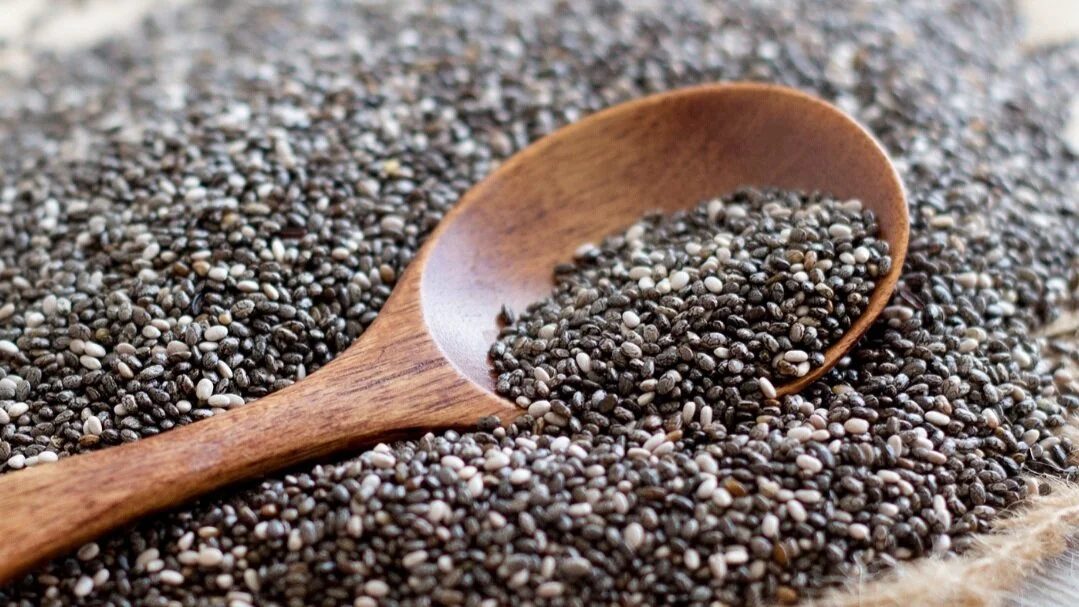Chia Pet for your heart?
Who remembers chia pets? I remember when I was little, I used to stay at my aunt Zoz’s house (I call her Zoz. Apparently, that’s easier to pronounce than Cheryl!) and we would watch Willy Wonka and then bust out the chia pets! Although, that’s not exactly what we are talking about, it’s what I always think of when I use chia seeds!
Chia seed (Salvia hispanica L.), not to be confused with chai which it the Hindi word for tea, is considered an ancient grain and new-aged super-food. Chia seeds date back to well over 5,500 years and were the main staple of the Mayan and Aztec empires. And if it’s good enough for those bad-ass warriors, it’s good enough for me! The nutritional composition of chia seeds is where they get to be really impressive! They are a good source of polyunsaturated fatty acids (omega-3’s and omega-6’s), soluble dietary fiber, protein, and phytochemicals. According to literature, chia seeds may play an important role in the reduction of diseases such as obesity, hypertension, cardiovascular disease, cancer, and diabetes. Yep, it’s that powerful!
Let’s take a closer look….
Thanks to the high nutritional contributions of chia seeds, they are being studied for their therapeutic application, which basically means how they may be used to help prevent disease. Chia seeds help to protect the cardiovascular system through their anti-inflammatory properties, control lipid metabolism, and help to reduce oxidative stress. These qualities all contribute to the chia seeds’ disease-fighting potential. Additionally, the fiber helps to move everything through the body including water, nutrients, toxins, and waste. Y’all know what a fiber-nerd I am, right!!
In one randomized, single-blind trial on 20 adults (yes, that is a small sample size) with type 2-diabetes, found a significant reduction in systolic blood pressure over 12 weeks of eating bread with 37g of chia seeds per day.
In another study, this one a randomized double-blind study (the gold-standard in clinical research), 67 adults saw significant reductions in triglycerols, C-reactive protein, and insulin resistance after consuming 35 g of chia seeds daily for 12 weeks. They all saw a decrease in total cholesterol.
More research is needed on the clinical application of chia seeds, but so far, the preliminary research looks promising. Again, this is an example of a time when all the research is not yet complete, but because there is very little chance for side-effects when adding chia seeds to food it is a low-risk food for many people and will be regulated by the body. You should make your own decision with the guidance of your healthcare provider whether or not to add chia seeds to your diet.
So, how to you use these guys? Chia seeds have a tough outer coating which is difficult for your digestive system to break down. It is recommended to either use a high-powered blender to crack them open or to create a chia seed gel. To do that, soak a tablespoon of chia seeds in a half cup of water or other liquid (almond milk is my choice) for at least 10 minutes. You will notice the seeds form a gel. Then just add the gel to whatever you are cooking. The texture is a little odd at first, but it is definitely something I would encourage you to get over because of the awesome health benefits! If you like coffee, here’s a great recipe for you to try!
Chocolate Chia Seed Pudding (VitaCost.com)
1 cup full-fat coconut milk (the kind in a can)
2 Tbsp. instant coffee or instant espresso
2 Tbsp. chia seeds
1 Tbsp. vanilla
¼ cup unsweetened cocoa powder
2 tsp. cinnamon
Directions:
1. In a medium bowl, soak chia seeds in milk for several minutes to thicken. Stir in coffee, vanilla, and cocoa powder.
2. Place pudding in the fridge so it continues to thicken.
3. To serve, sprinkle with cinnamon. If desired, top with fruit or nuts.
That’s all for now! Enjoy!
Peace, love & kale!
Lindsay
References:
Marcinek, K., & Krejpcio, Z. (2017). Chia seeds (Salvia hispanica): health promoting properties and therapeutic applications – a review. Roczniki Panstwowego Zakladu Higieny, 68(2), 123–129. PMID: 28646829
Melo, D., Machado, T. B., & Oliveira, M., (2019). Chia seeds: an ancient grain trending in modern human diets. Food & function, 10(6), 3068–3089. https://doi.org/10.1039/c9fo00239a
This information is not intended to diagnose, treat, cure or prevent any disease. For educational purposes only.

